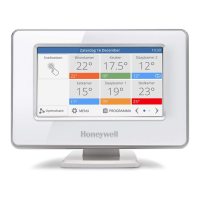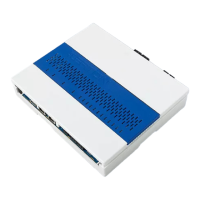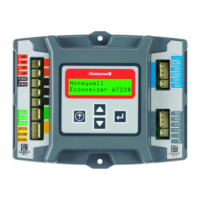ENGINEERING MANUAL OF AUTOMATIC CONTROL
CONTROL FUNDAMENTALS
28
The difference between repeatability and static error is that
repeatability is the ability to return to a specific condition,
whereas static error is a constant deviation from that condition.
Static error (e.g., sensor error) does not interfere with the ability
to control, but requires that the control point be shifted to
compensate and maintain a desired value.
The dead zone is a range through which the controlled
variable changes without the controller initiating a correction.
The dead zone effect creates an offset or a delay in providing
the initial signal to the controller. The more slowly the variable
changes, the more critical the dead zone becomes.
CAPACITANCE
Capacitance differs from capacity. Capacity is determined
by the energy output the system is capable of producing;
capacitance relates to the mass of the system. For example,
for a given heat input, it takes longer to raise the temperature
of a cubic foot of water one degree than a cubic foot of air.
When the heat source is removed, the air cools off more
quickly than the water. Thus the capacitance of the water is
much greater than the capacitance of air.
A capacitance that is large relative to the control agent tends
to keep the controlled variable constant despite load changes.
However, the large capacitance makes changing the variable
to a new value more difficult. Although a large capacitance
generally improves control, it introduces lag between the time
a change is made in the control agent and the time the controlled
variable reflects the change.
Figure 44 shows heat applied to a storage tank containing a
large volume of liquid. The process in Figure 44 has a large
thermal capacitance. The mass of the liquid in the tank exerts
a stabilizing effect and does not immediately react to changes
such as variations in the rate of the flow of steam or liquid,
minor variations in the heat input, and sudden changes in the
ambient temperature.
LIQUID IN
HEATING
MEDIUM IN
LIQUID OUT
HEATING
MEDIUM OUT
C2076
Figure 45 shows a high-velocity heat exchanger, which
represents a process with a small thermal capacitance. The
rate of flow for the liquid in Figure 45 is the same as for the
liquid in Figure 44. However, in Figure 45 the volume and
mass of the liquid in the tube at any one time is small compared
to the tank shown in Figure 44. In addition, the total volume
of liquid in the exchanger at any time is small compared to the
rate of flow, the heat transfer area, and the heat supply. Slight
variations in the rate of feed or rate of heat supply show up
immediately as fluctuations in the temperature of the liquid
leaving the exchanger. Consequently, the process in Figure 45
does not have a stabilizing influence but can respond quickly
to load changes.
Fig. 45. Typical Process with Small Thermal
Capacitance.
Figure 46 shows supply capacitance in a steam-to-water
converter. When the load on the system (in Figure 44, cold
air) increases, air leaving the heating coil is cooler. The
controller senses the drop in temperature and calls for more
steam to the converter. If the water side of the converter is
large, it takes longer for the temperature of the supply water to
rise than if the converter is small because a load change in a
process with a large supply capacitance requires more time to
change the variable to a new value.
LIQUID
IN
STEAM
IN
TANK
LIQUID
OUT
CONDENSATE
RETURN
C2075
Fig. 44. Typical Process with Large Thermal
Capacitance.
CONVERTER
STEAM
VALVE
CONTROLLER
HOT WATER SUPPLY
(CONSTANT FLOW,
VARYING
TEMPERATURE)
HOT WATER
RETURN
COLD AIR
(LOAD)
CONDENSATE
RETURN
STEAM
TRAP
HEATING
COIL
HOT AIR
(CONTROLLED
VARIABLE)
PUMP
C2077
Fig. 46. Supply Capacitance (Heating Application).

